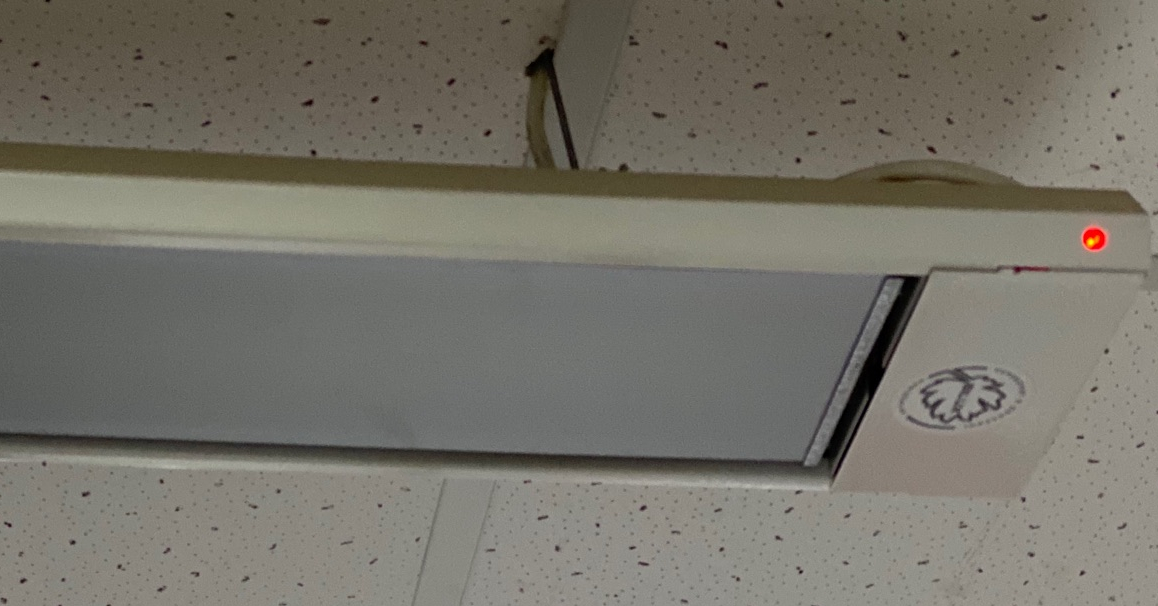Add or switch to infrared heating#
Infrared heating doesn’t attempt to warm the air in a space - it just makes people comfortable by warming them and the space’s surfaces. It relies on radiant heat to do this, the same principle that makes you feel warm in the sun.
Infrared heating can be used as the sole form of heating or as a “top-up”. For instance, if you want to switch to an air source heat pump but it won’t cover all your heating needs, you might use the pump to provide a constant level of background heating, and just add infrared in the depths of winter or for groups that need more heating than usual. Similarly, you could use infrared heating to reduce your reliance on an existing gas boiler. You could also use it for rooms that need warmth when the rest of the space is empty.

Picture source: Wikimedia Commons, Copyright Palytsialvan, CC-BY-A-SA-4.0, our crop
Infrared heaters are usually mounted at high level for safety and to give them wide angle coverage of the space. A major advantage is that they only need to be on when people are in, although the warmth doesn’t last, unlike for convective heating. The running costs should be lower than for convective electric heating and they are low maintenance, unlike gas boilers.
You need to get the right kind of infrared heating for your needs. It comes in a range of wavelengths. Short-wave heaters get very, very hot - up to 1500 degrees C - and are intended for outdoor spaces that need that intensity of heat to have any effect. Medium-wave heaters are cool enough to be comfortable for longer use and are the usual choice for large, draughty spaces. Short-wave are cooler still and might be, for instance, mounted on the ceiling of a relatively small space. The longer the wave length, the more penetrating the heat is.
You’ll need professional help to assess what type is best for your application and calculate heating requirements for the space so you don’t install more heating than you need - users aren’t good at turning things off or down.
More information
Infrared heating in churches - especially see the PDF linked from that page


